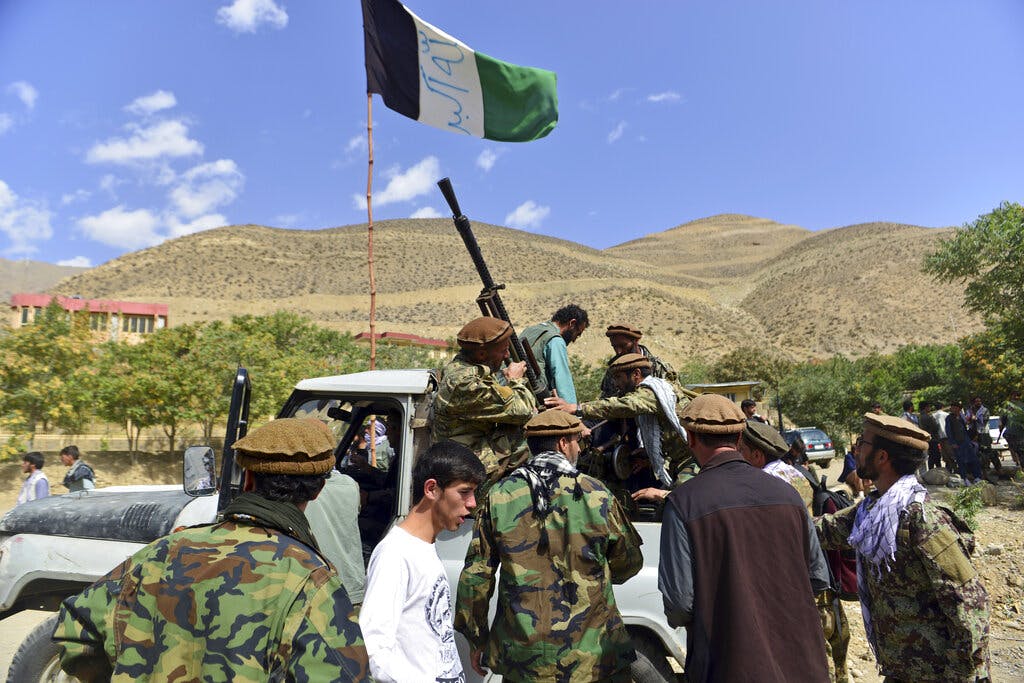Afghan National Resistance Advancing Against Taliban; ‘We Are Actually Operating in 12 Provinces,’ It Tells the Sun
The news suggests that there’s nothing like a Russian invasion of one of its neighbors to knock the dust of a previous one even farther off the radar.

Forces belonging to Afghanistan’s National Resistance Front have killed 10 members of the Taliban and severely wounded a dozen others today in an ambush that was reported by the NRF spokesperson, Sibghatullah Ahmadi.
In a series of tweets, Mr. Ahmadi said that Taliban fighters attacked the positions of National Resistance Front fighters in Panjshir province. Before reaching their target, though, they were ambushed near a base in the Hesarak area of the province, which is about 90 miles north of Kabul. The battle started on Friday morning and is said to be ongoing, with no reported casualties on the NRF side.
The news suggests that there’s nothing like a Russian invasion of one of its neighbors to knock the dust of a previous one even farther off the radar, but count on a new round of old school Afghan resistance to thuggery to make new waves internationally.
“Panjshir has 21 side valleys and we are in control of all of them,” the head of the NRF’s foreign relations, Ali Nazary, told The New York Sun today. “The Taliban wanted to take control of one of the side valleys but they were ambushed before even entering.”
Mr. Nazary works for the founder of the NRF, Ahmad Massoud, who is the son of the Lion of Panjshir, Ahmad Shah Massoud.
After the Afghan capital fell to the Taliban in August 2021, the reinstatement of the Islamic Emirate of Afghanistan quickly followed — but the ambush and its deadly toll will be a loud message to the fundamentalist powers-that-be in Kabul: the struggle against their shaky rule is by no means over. And this reality is not a secret, though it is somewhat hushed.
In a report released this week, the Special Inspector General for Afghanistan Reconstruction, or SIGAR, acknowledged NRF resistance in five Afghan provinces. SIGAR provides independent oversight of the $145.87 billion America provided to implement reconstruction programs in Afghanistan. There could be more resistance activity afoot than that indicated in the report.
“We are actually operating in 12 provinces — we were operating in two provinces in September so both Panjshir and the Andarab district, in the Baghlan province. Right now we control more than 55 percent of Panjshir,” said Mr. Nazary. “We also liberated a few villages that were under Taliban control in Andarab for the past seven months.”
While reliable information about Afghanistan has often been in short supply since the Taliban takeover of the country last year, there are certain facts that lend credence to the claim of today’s Taliban casualties. In early September 2021 the Taliban seized Afghanistan’s Panjshir province, which at that time was the country’s last holdout against the jihadist militant group.
While a Taliban spokesman, Zabihullah Mujahid, said then on Twitter that the province was “completely conquered,” the National Resistance Front in Afghanistan said, also on Twitter, that the Taliban’s claim of occupying Panjshir was false, and furthermore that fighting continued across the valley.
The Washington Post reported that September that resistance fighters had set up a base in Panjshir just days after the Taliban seized control over Kabul the month prior. In an opinion piece for the Washington Post in August 2021, Mr. Massoud wrote “The mujahideen resistance to the Taliban begins now.”
The veracity of some of Mr. Nazary’s current claims, while not independently corroborated, could be underscored by cracks in the Taliban’s rule since the takeover, not only because the West has suspended most humanitarian aid to Afghanistan. Mr. Nazary, for his part, pulls no punches.
“The Taliban is not a united or cohesive force,” he said. “They are divided into many factions, they lack leadership and are fighting over power and resources and facing an economic and humanitarian crisis…the country is in a state of anarchy, it’s mostly fiefdoms,” he added. In his estimation the situation is very fluid “and this is why no one is recognizing the Taliban — they don’t trust that they’re going to be staying in power.”
Afghanistan’s National Resistance Front is, without outside assistance, fighting a disorganized and widely reviled foe in the Taliban, which according to Mr. Nazary lacks both legitimacy and popular support.
Today’s battle, though at a considerable remove from Kabul, is not the first of its kind. There was fighting earlier this week in the area between Bagram and Panjshir that saw an unspecified number of Taliban losses.
“A month ago they brought in a thousand forces and two helicopters and tried to take over another side valley,” Mr. Nazary said, “but failed to do so and lost a commander from Kandahar who headed up a special forces unit from Kandahar.” He claims the Taliban acknowledged the commander’s death in battle.
While most, if not all, of the West might consider the Taliban’s grip on Afghanistan to be a done deal, it is clear that not everyone shares that view. Certainly the NRF does not. “People believe that the last hope for the freedom and actual existence of Afghanistan as a country is the NRF,” Mr. Nazary said. “We are optimistic that we will be able to start liberating major portions of the country by the end of this year.”

